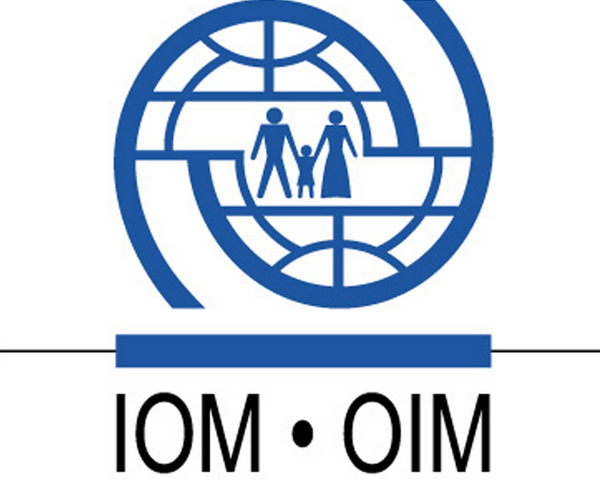
IOM Monitors Italy Arrivals During Busy Smuggling Week in Mediterranean
In February 2015 IOM has recorded the arrival in Italy of some 4300 migrants – 3800 from Friday 13th to Tuesday 17th. The majority of these migrants are sub-Saharan Africans although in the last 24 hours IOM staffers have reported that they also include Syrians and Eritreans.
Migrants have been rescued and brought to the ports of Lampedusa Pozzallo Augusta Porto Empedocle Trapani (Sicily) and to Calabria on the mainland.
Since last Sunday February 15th 1215 migrants disembarked at Lampedusa after at least six different rescue missions carried out by the Italian Coast Guard Navy Guardia di Finanza and merchant ships. Most were rescued 100 nautical miles south of Lampedusa.
Among those landing at Lampedusa was a three-month old infant girl. Her Somali mother described to IOM researcher Marzia Rango the details of a harsh desert crossing to Libya.
She gave birth in Libya in what migrants refer to as a 'connection' house where she spent three months and was subjected to abuse by the smugglers. She also told IOM that she saw people dying while crossing the desert. Their bodies were abandoned.
IOM staffers also interviewed a 15-year-old Syrian boy traveling alone who said he was bound for Germany.
Since last Saturday February 14 1394 migrants disembarked in Western Sicily through seven different rescue missions. Between February 15 and February 17 approximately 839 migrants disembarked in Eastern Sicily (Pozzallo and Augusta).
These migrants came mainly from Sub-Saharan countries and Somalia and included women and unaccompanied minors. All reached the Italian coast safely. No deaths were reported among those attempting the journey in this week's wave.
Stories of the journey vary considerably. Syrian and Palestinians families used the route through Sudan flying from Amman Beirut or Istanbul to Khartoum and then crossing the desert to Libya. This route is now one of the few open to Syrians and Palestinians since the Algerian government has made it increasingly difficult for these nationalities to obtain visas. Thus the route through Algeria has been replaced by an alternative route through Sudan.
Periods and conditions of stay in Libya also are quite varied with migrants reporting stays of between five days and two years while waiting to leave for Europe. Of their conditions of stay all the people interviewed described a situation of real war. Tripoli itself is now under attack with many migrants reporting that it is simply too dangerous to try to remain in the city.
On Lampedusa some arrivals reported paying smugglers as little as USD 400 to take a spot on one of the small inflatable crafts smuggling gangs have been using in this latest wave of departures. Others complained of being detained for up to a month in the Libyan 'connection' houses sometimes with as many as 100 detainees crowded into one or two rooms and sharing a single toilet.
According to a registry compiled this week the 514 Eritreans – 97 of them women or minors – comprised the largest national contingent processed at Lampedusa. The second largest group came from Senegal with 123 adults and 12 minors. Somalis (123) Nigerians (112) Palestinians (76) Malians (56) and migrants from the Ivory Coast (50) were the other large groups. Others in this latest wave include Benin Burkina Faso Ghana and Gambia nationals.
Migrants arriving in Eastern Sicily told IOM staffers that they paid smugglers between USD 700 and USD 1000 per person to undertake the journey. Syrians reported paying up to USD 1500 each but that price may have been reduced due to dire weather conditions.
'Libya is very dangerous for migrants and the situation may further deteriorate' said Federico Soda Director of the IOM Coordinating Office for the Mediterranean in Rome. 'It is urgent to help these people to rescue them as soon as they leave for it is at this moment that they are caught up in the crisis and are among its most vulnerable victims.'
Many told IOM staff that they came directly from detention centers and were forced to pay guards to be released. The guards then brought them to the departure point. They say they were then brought to the coastal town of Garabouli 15km from Tripoli. From there many said they set off in what they described as overcrowded 'plastic boats' carrying from 90 to 120 people.
A 17-year-old Gambian told IOM he had been working in Libya for over a year sending money back to his family. He said the reason he left Libya is that the situation has become unsustainable as violence and extortion is systematically used against migrants particularly those coming from sub-Saharan Africa.
"Testimonies confirm that smugglers are increasingly violent with migrants at the departure points and when they hold them in so called 'connection houses' before their departure where they wait for days or weeks before embarking" Soda added.
A teen from Guinea Bissau told IOM about his journey to Libya via Senegal Mali Burkina Faso and Niger. He said his telephone was stolen by the Libyan military at the border. He said he spent three months in the country while being exploited for construction work and spoke of terrible living conditions in Libya where he said he witnessed three companions murdered by his exploiters. He said he was repeatedly attacked. 'Even my enemy – I would not want him to come to Libya' he said.
IOM works in southern Italy alongside UNHCR Save the Children and the Italian Red Cross in the framework of the Praesidium Project financed by the Italian Ministry of the Interior and the European Commission. IOM staff monitors reception procedures provides legal counseling to migrants and supports the authorities in the identification of vulnerable groups such as victims of trafficking and unaccompanied minors.

Legal Disclaimer:
MENAFN provides the
information “as is” without warranty of any kind. We do not accept
any responsibility or liability for the accuracy, content, images,
videos, licenses, completeness, legality, or reliability of the information
contained in this article. If you have any complaints or copyright
issues related to this article, kindly contact the provider above.


















Comments
No comment